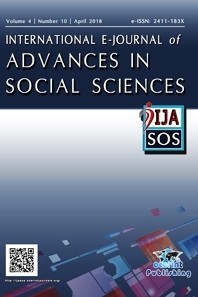
International E-Journal of Advances in Social Sciences
Yazarlar: Nadzeya DARDYKAVA
Konular:-
DOI:10.18769/ijasos.366848
Anahtar Kelimeler:Aspectual verbs,Initial phase,Grammaticalization,Ch. Lehmann’s parameters,The Turkish language
Özet: The present paper is concerned with the grammaticalization of the Turkish aspectual verb başlamak. The paper analyses the level of autonomy of başlamak with Ch. Lehmann’s parameters of grammaticalization. These parameters are based on three criteria, i.e. weight, cohesion and variability, which act on syntagmatic and paradigmatic axes. The weight of a sign viewed paradigmatically is its integrity or semantic and phonological complexity. Viewed syntagmatically, it is its structural scope, i.e. the extent of constructions it helps to form. For başlamak no signs of phonological attrition (gradual loss of phonological substance) were found. Semantically it has inceptive meaning and acts both as main and functional verb with no change of meaning. Başlamak forms constructions with verbal nouns ending in –maya/-meye, which generally belong to dynamic situation types. The cohesion of a sign on paradigmatic level is depicted by its paradigmaticity, i.e. the degree to which a sign enters a paradigm. On syntagmatic level the cohesion of a sign is associated with the degree to which it depends on or attaches to other signs. Başlamak is the main means of expressing initial phase in the Turkish language. Verbal constructions with it are built according to the schema where başlamak follows a verbal noun, ending in –maya /-meye, are easily divided into logical parts and are not phraseologically related. Paradigmatic variability is the freedom with which the language user chooses a sign which is concerned with the restrictions on its usage. Başlamak is used with no limitations in the structures and forms peculiar to the Turkish language. Syntagmatic variability, in the case of a grammaticalized sign, concerns mainly its positional mutability with respect to those constituents with which it enters into construction. Başlamak is located in the postposition to its complement and syntactically serves link verbs functions majorly acting as a part of complex predicate. The analysis shows that development of başlamak doesn’t show many signs of desemanticization, obligatorification, coalescence and other processes characteristic to grammaticalization. Being semantically neutral and syntagmatically and paradigmatically variable it occupied its slot in expressing initial phase of action in the Turkish language.